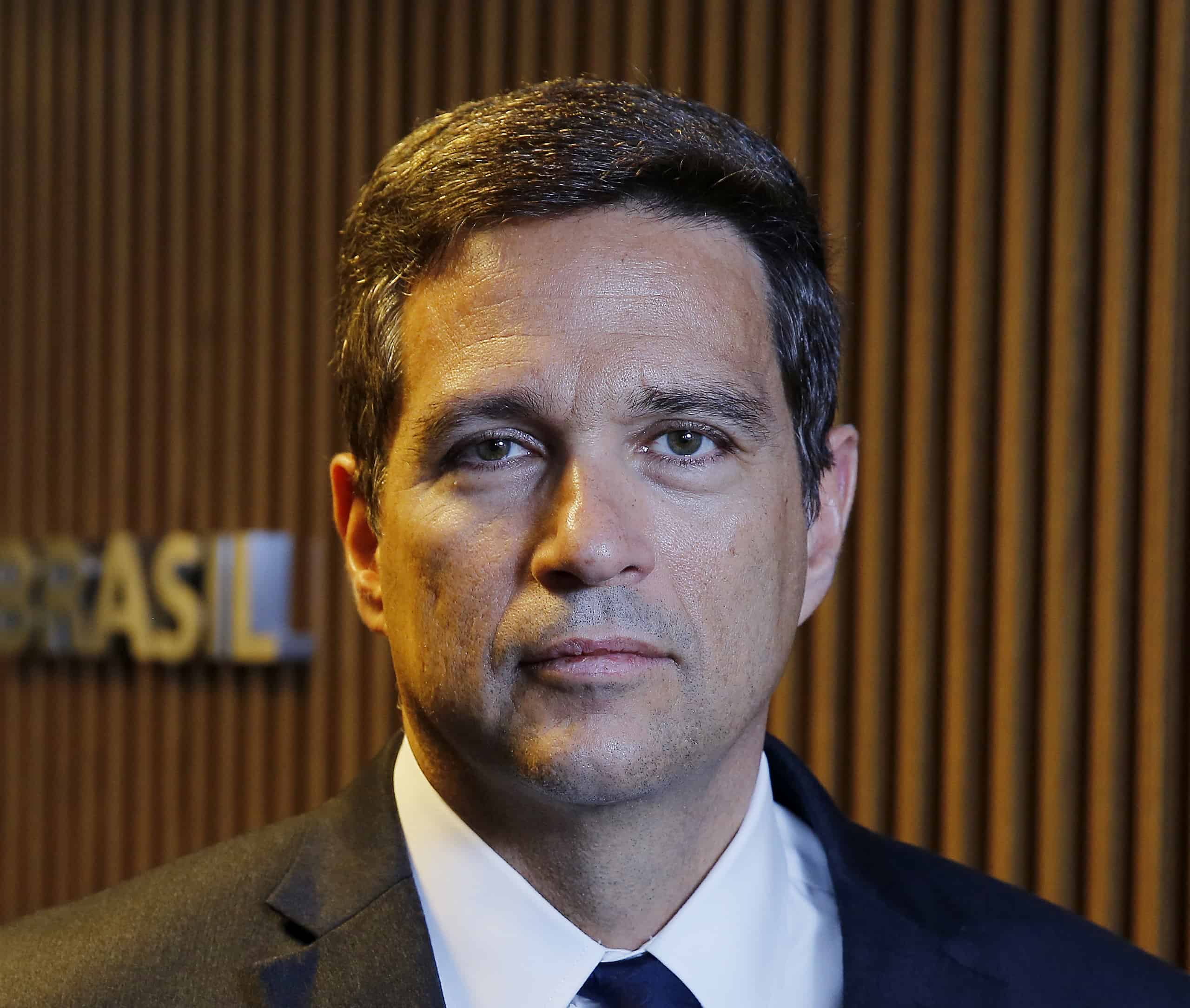Roberto Campos Neto, governor of the Banco Central Do Brasil, discusses growth trajectories and inflation prospects for South America’s leading economy.

Global Finance: The Brazilian economy is stronger than expected by experts. What is your view on what will happen in the next 12 months?
Roberto Campos Neto: In fact, the Brazilian economy has been surprising on the upside. At the beginning of the year, market analysts were forecasting a very small growth of GDP in 2023, with the median of forecasts standing around 0.8%. After a large positive surprise in terms of growth in the first quarter, due to a strong performance of the agricultural sector, followed by a higher-than-expected growth in the second quarter, agents now expect GDP growth rate to be around 2.6% this year. The Banco Central do Brasil’s (BCB) projection for GDP growth in 2023 was revised from 1.2% in March to 2.0% in June and should have a further upward revision in the next Inflation Report to be launched in September.
Notwithstanding the increased annual growth forecast, the BCB’s projections continues to reflect a scenario of decelerating economic activity from the second half of 2023 onwards, influenced by the slowdown in the pace of global growth and the cumulative impacts of the restrictive domestic monetary policy. The median of market forecasts points to a GDP growth rate of 1.3% in 2024, probably reflecting these same factors. However, both the BCB and market analysts have consistently underestimated the actual GDP growth over the last quarters. There are currently some discussions about the reasons for this underestimation, but this may indicate that potential growth in Brazil is in fact larger than current estimates.
Finally, it is worth mentioning that, in Brazil, the monetary policy so far has managed to promote a “soft landing,” reducing inflation with lower impacts in GDP growth, unemployment rate, and credit growth, in comparison to other emerging and advanced economies.
GF: What are the positive elements and what are the main risks?
Campos Neto: The rebalancing of consumption between goods and services should continue in Brazil in the next quarters, with moderation in the consumption of goods in favor of greater demand for services. This dynamic has contributed to greater resilience in the labor market. Currently, the low unemployment rate and robust creation of formal jobs indicate that the labor market in Brazil is tight. Some sectors, such as those related to technology and more recently parts of the services sector, have faced shortages of available skilled workers.
Even with the tightness in the labor market, there is no evidence of high wage pressures in labor negotiations. From the end of 2022 to the first quarter of 2023, average real earnings returned to levels close to the pre-pandemic period. Since then, real wages have leveled-off or even declined. Regardless of the low unemployment rate, the participation rate has been historically low, and the employment has stalled along the last quarters, which may be holding wages back.
However, there are some uncertainties in the outlook. In the domestic front, despite the efforts from the government to promote reforms to improve the fiscal framework and the tax system, financial market agents still do not see the government achieving the announced primary balance fiscal targets in the next years, due to the considerable requirements in terms of increasing tax revenues. This in turn also reflects in inflation expectations for the next years, which currently are only partially anchored. This “twin deanchoring” is a challenge for the conduct of both fiscal and monetary policies.
The global outlook still presents risks that may lead to the materialization of extreme scenarios of global financial assets repricing. As core inflation continues to show resistance to converge to levels compatible with inflation targets, the risk of new episodes of financial assets repricing, associated with eventual frustration of expectations regarding monetary policy decisions in advanced economies, remains relevant. Added to this risk is the deterioration in the fiscal outlook of these economies and the movement of central banks to reduce assets purchased during the pandemic, which put pressure on long-term interest rates of the main countries.
With all these uncertainties, the BCB sees risks for inflation in both directions. Among the upside risks for the inflationary scenario and inflation expectations, it should be emphasized (i) a greater persistence of global inflationary pressures; and (ii) a stronger than expected resiliency on services inflation due to a tighter output gap. Among the downside risks, it should be noted (i) a greater than projected deceleration of global economic activity, particularly due to adverse conditions in the global financial system; and (ii) an impact on global disinflation larger than expected from synchronized monetary policy tightening. This challenging scenario calls for caution, reinforcing the view of serenity and moderation in the next steps to be taken by the monetary authority.
As regards the risks for financial stability, the BCB assesses that the National Financial System (SFN) exposure to exchange rate risk is low and the dependence of financial institutions on external funding is small.
Looking ahead, due to the ongoing reorganization of international production chains and geopolitical developments, there are also opportunities for Brazil to increase its participation in global supply chains in the coming months and years. With its large natural resources, the country has a great potential to increase its role as a provider of energy and food security, also in line with the green transition.
GF: What is your expectation of inflation? How much is the inflation target for 2024 and did you ever consider raising it? Will Brazil need more rate increases in the next 12 months?
Campos Neto: In the reference scenario, BCB’s inflation projections stand at 4.9% for 2023, 3.4% for 2024, and 3.0% for 2025. The inflation target for 2024 and 2025 is 3%, with a tolerance margin of 1.5 p.p. up or down. In June, the National Monetary Council (CMN) maintained the inflation target and its tolerance range for 2026 at the same values as those for 2024 and 2025, and announced a change to a continuous target system, with rules yet to be set out. We evaluate that, if the inflation target for 2026 were increased, the credibility of the inflation targeting regime would be harmed and there would be a decrease in the degrees of freedom of monetary policy. Maintaining the target at 3% has reduced uncertainty about the targets for subsequent years, contributing for a partial anchoring of expectations and improving the credibility of the inflation targeting regime.
The positive behavior of inflation expectations following the announcement of the CMN, as well as the improvement in headline inflation measures, contributed to the start of a gradual cycle of monetary easing, albeit keeping the necessary contractionary monetary policy for the disinflationary process. After the 0.50 p.p. cut in the August meeting, the Monetary Policy Committee (Copom) anticipates further cuts of 0.50 p.p. in the next meetings. This pace brings together on the one hand, the firm commitment with the reanchoring of expectations and the disinflationary dynamics and, on the other hand, the adjustment in the level of monetary tightening in real terms in face of the more benign dynamics of the anticipated inflation in the reference scenario projections.
GF: Can you please express your opinion on the region’s economy—the outlook for Latin America in the next 12 months?
Campos Neto: First, the set of Latin America countries is very diverse, so there is a great dispersion to the outlook among the region’s economies. Even so, these countries, as most of the world, suffered economic shocks in previous years that affected their economies in a similar fashion. Among these shocks are the economic consequences of the pandemic, the unprecedent monetary policy easing and the implementation of large income support measures following the pandemic, global supply chains disruptions, and the commodity price shock caused by the war in Europe.
In this context, Latin American countries performed somewhat similarly in these years, that is, most of them experienced a strong recovery in activity around 2021 and a significant acceleration in inflation. After that, with the pandemic under control, governments reduced income support policies and central banks started to implement tight monetary policies to combat inflation.
As a result of this timely response of monetary policy, inflation rates started to slow down, albeit heterogeneously, in most countries. Brazil, for instance, was able to reduce inflation with low cost in terms of activity, as I mentioned before. With the more benign scenario for inflation, most central banks in Latin America paused the monetary tightening cycle and some, such as central banks of Brazil and Chile, have already start to reduce policy rates.
Nonetheless, we have seen resilience in core inflation in many countries, especially in services prices. There are several factors determining the dynamics of core inflation, which varies greatly among countries, ranging from tight job markets, growth still close or above potential, unanchored inflation expectations and the existence of indexation processes. In addition, it is also likely that fiscal policy remains expansionist in many jurisdictions, which may also help explaining core inflation persistence.
On the external side, the ongoing tightening of advanced countries’ monetary policies mean a source of risk to the disinflation process in Latin America countries, as it may reduce the attraction of capital flows to the region, which has a double effect of reducing investments and putting pressure on exchange rates. As it could impact inflation and inflation expectations, this may result in a slower path of interest rates reduction, with negative consequences for activity. In a more extreme scenario, a strong and abrupt increase in global interest rates—probably driven by higher US rates—could damage growth and inflation management in Latin America.
As for economic activity, the prospect for China’s economic growth, over which there are many uncertainties at this moment, is a critical variable determining region’s performance. Both due to its relevance to the global economy and the large volume of imports of raw materials, a significant slowdown in the Chinese economy could harm Latin American economies, notably on commodity export countries.
Our baseline scenario can be considered cautiously optimistic. Excluding a new negative shock, we expect advanced central banks to proceed in an orderly fashion towards moderately tighter monetary policy stances. Our scenario also contemplates a smooth deceleration of the Chinese economy. However, we emphasize that in our view, risks on the external scenario remain biased to the downside, with little possibility of positive surprises. On the internal side, we believe that monetary policy will remain cautious and independent in most countries, and that fiscal policy will not be overly expansionist. That is consistent with a steady disinflation trajectory and growth rate convergence over the next quarters.



